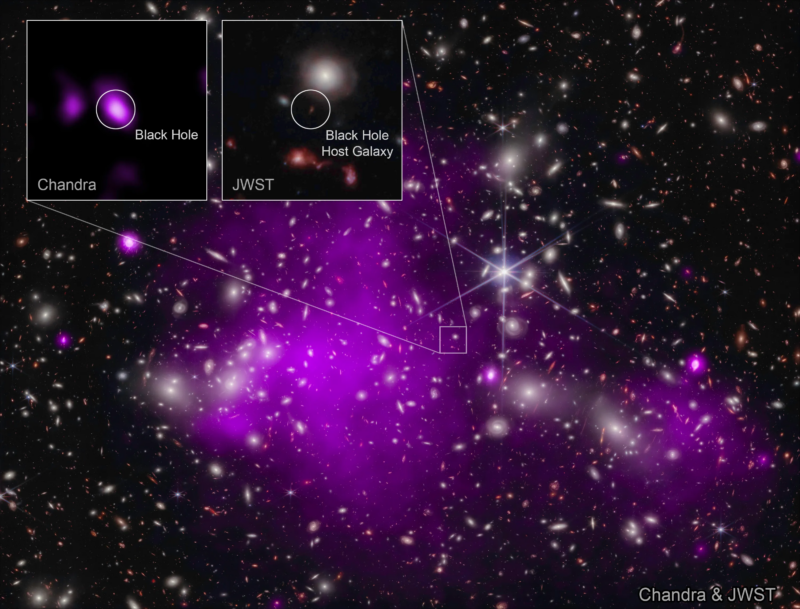
Enlarge / Inset shows the JWST image of the galaxy in infrared, along with the X-rays from the black hole seen by the Chandra. While the X-ray source is far smaller than the galaxy, X-rays are much harder to remove. (credit: X-ray: NASA/CXC/SAO/Ákos Bogdán; Infrared: NASA/ESA/CSA/STScI; Image Processing: NASA/CXC/SAO/L. Frattare & K. Arcand)
Researchers combing through some of the earliest galaxies in the Universe have found one that appears to have an actively feeding central black hole. Based on the amount of radiation it's emitting, the researchers estimate that it accounts for roughly half of the mass of the entire galaxy it's in—an astonishingly high fraction compared to modern galaxies.
The fact that such a large object can exist only half a billion years after the Big Bang places severe limits on how it could possibly have formed, strongly suggesting that supermassive black holes formed without ever having gone through an intermediate step involving a star.
Old X-rays
The earliest galaxies in the Universe that we know about have been identified using the James Webb Space Telescope, which took advantage of a galaxy cluster in the foreground that magnified more distant ones through gravitational lensing. Using the lens provided by a specific cluster, the Webb identified 11 galaxies that were imaged as they existed less than a billion years after the Big Bang.
Read 15 remaining paragraphs | Comments
Ars Technica - All contentContinue reading/original-link]




